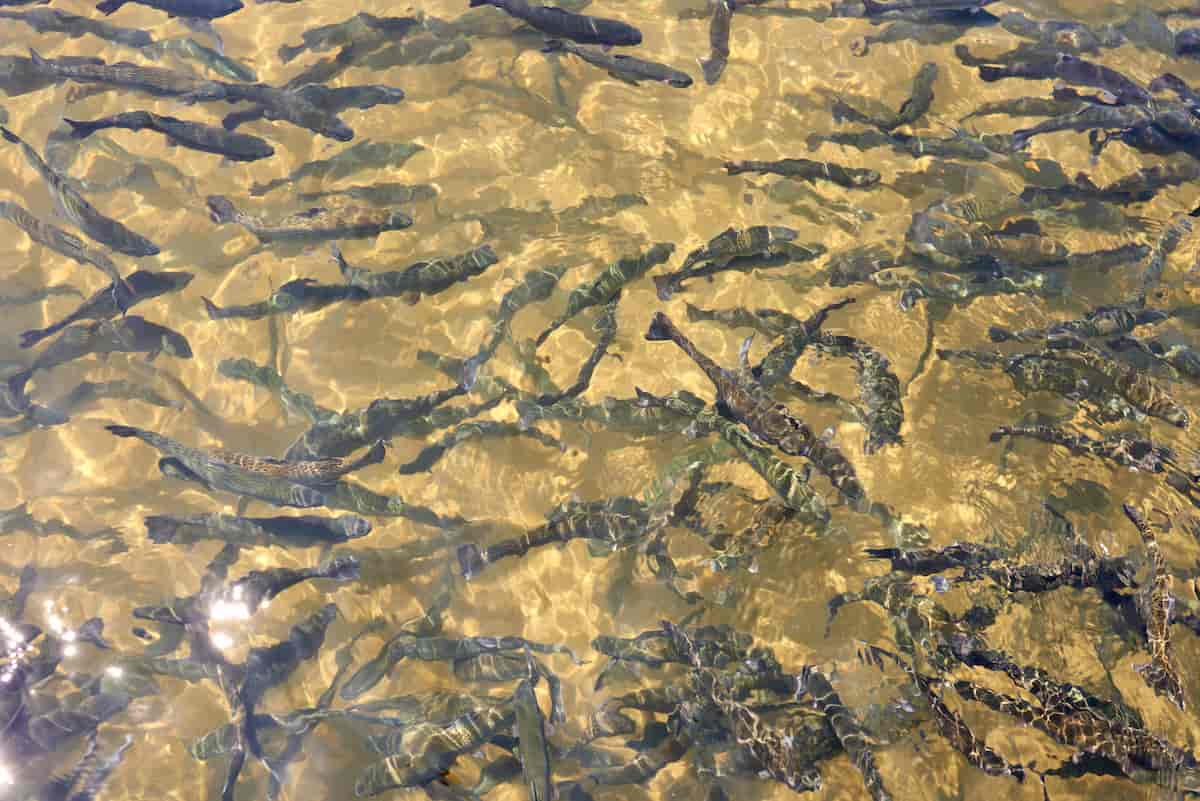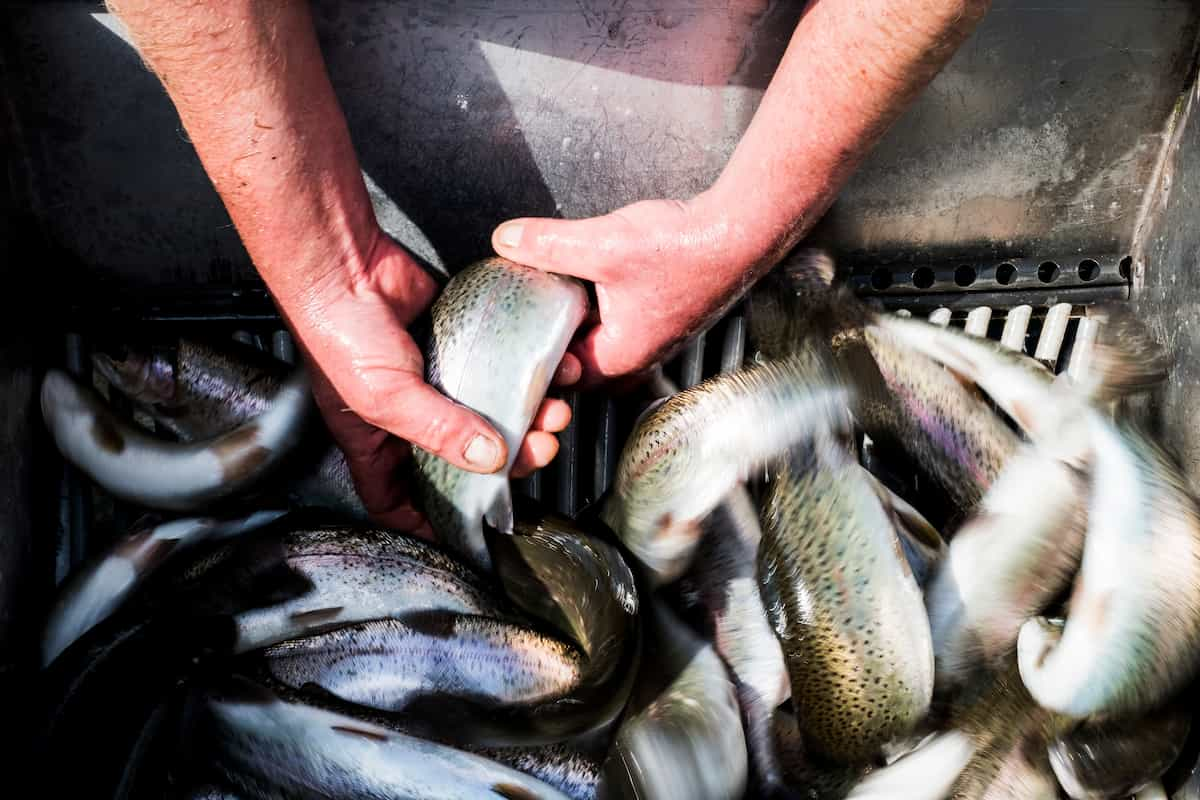Trout farming is becoming increasingly popular for producing high-quality, healthy fish for commercial and recreational purposes. Not only is it a sustainable and eco-friendly alternative to wild-caught fish, but it can also be a profitable business venture. If you’re interested in starting your own trout farm, here is the comprehensive guide.

How to Start Trout Farming in 10 Steps
Suitable Site
The first step to starting a trout farm is to choose a suitable site. Look for an area with access to fresh water and plenty of space. The site should be located away from sources of pollution, such as industrial areas, highways, or agricultural runoff. You’ll also need to consider factors like the availability of electricity, the cost of land, and the local zoning regulations.
Business Plan
Before starting any business, it’s important to develop a detailed business plan. This should include information on your operation’s size and scope, target market, financial projections, and marketing strategy. A well-crafted business plan will help you secure funding, attract investors, and guide your decision-making as your business grows.
Necessary Permits and Licenses
Trout farming is a heavily regulated industry, so you must obtain the necessary permits and licenses before starting operations. This will typically include a fish culture license from your state’s Department of Fish and Wildlife and any local permits required by your city or county.
Designing
Once you’ve secured your site and obtained the necessary permits, it’s time to design your fish farm. This will involve determining the size and layout of your ponds or tanks and selecting the appropriate equipment, such as aerators, filters, and pumps. You’ll also need to decide on a feeding regimen and water management system.
Stocking
With your fish farm designed and your equipment in place, it’s time to stock your ponds or tanks with trout. There are many different species of trout to choose from, so be sure to select a variety well-suited to your climate and water conditions. You can purchase juvenile fish from a reputable hatchery or supplier.
In case you missed it: How to Start Catfish Farming in 10 Steps: DIY Guide for Beginners

Monitor Water Quality and Health
Maintaining high water quality is essential for the health and growth of your trout. This means monitoring water temperature, pH, dissolved oxygen levels, and ammonia and nitrite levels. You’ll also need to watch for signs of disease or parasites and take appropriate measures to prevent or treat any issues that arise.
Feeding
Feeding your fish a high-quality diet is crucial for their growth and health. Depending on how big your trout are and how old they are, you may need to feed them more than once a day. Commercial fish feeds are available, or you can formulate your own feed using ingredients like fish meal, soybean meal, and wheat flour.
Harvesting
When your fish reach maturity, it’s time to harvest them. This typically involves draining your ponds or tanks and using nets to capture the fish. Depending on your market and the size of your operation, you may sell your fish live or processed, such as filleted and frozen.
Marketing
Marketing your trout is an essential part of running a successful fish farm. Consider your target market, whether local restaurants, fish markets, or individuals. You may also want to consider developing your brand or labeling to differentiate your product from competitors.
Improve Your Operation
Finally, it’s important to improve your fish farming operation continuously. This means experimenting with new feeding strategies, monitoring and adjusting water quality parameters, and exploring new markets and products. You may also want to invest in new equipment or technologies to improve efficiency and productivity.
Key Factors to Remember
- Start small: It’s best to start with a small operation and gradually expand as you gain experience and market demand.
- Choose the right species: Select a trout that is well-suited to your climate and water conditions and has good market demand.
- Learn from others: Talk to other trout farmers in your area and learn from their experiences and expertise.
- Be patient: Trout farming is not a get-rich-quick scheme. It takes time, effort, and investment to build a successful operation.
In case you missed it: How to Start Carp Fish Farming in 10 Steps: DIY Guide for Beginners

You will also need to stock the tanks with juvenile trout and provide them with a high-quality diet. Monitoring the fish’s water quality, temperature, and health ensures their growth and well-being. Tank-farmed trout can be harvested when they reach maturity and can be sold live or processed for market.
Conclusion
Starting a trout farm can be a rewarding and profitable venture, but it requires careful planning, hard work, and a commitment to continuous improvement. By following these 10 steps and keeping these key factors in mind, you can start your own trout farm and contribute to the sustainable and eco-friendly production of high-quality fish.
- Feed Your Flock for Less: Top 10 Tips to Save on Chicken Feed
- Ultimate Guide to Ossabaw Island Hog: Breeding, Raising, Diet, and Care
- Hatching Answers: The Top 10 Reasons Your Chickens Aren’t Laying Eggs
- Eggs and Economics: Breaking Down the Cost of Raising Backyard Chickens
- Defend Your Greens: Proven Methods to Keep Iguanas Out of Your Garden
- Ultimate Guide to Cinnamon Queen Chicken: A Comprehensive Guide for Beginners
- Ultimate Guide to California Tan Chicken: Breeding, Raising, Diet, Egg-Production and Care
- Ultimate Guide to Marsh Daisy Chicken: Breeding, Raising, Diet, and Care
- 10 Types of Chicken Farming Businesses You Can Start for Profits